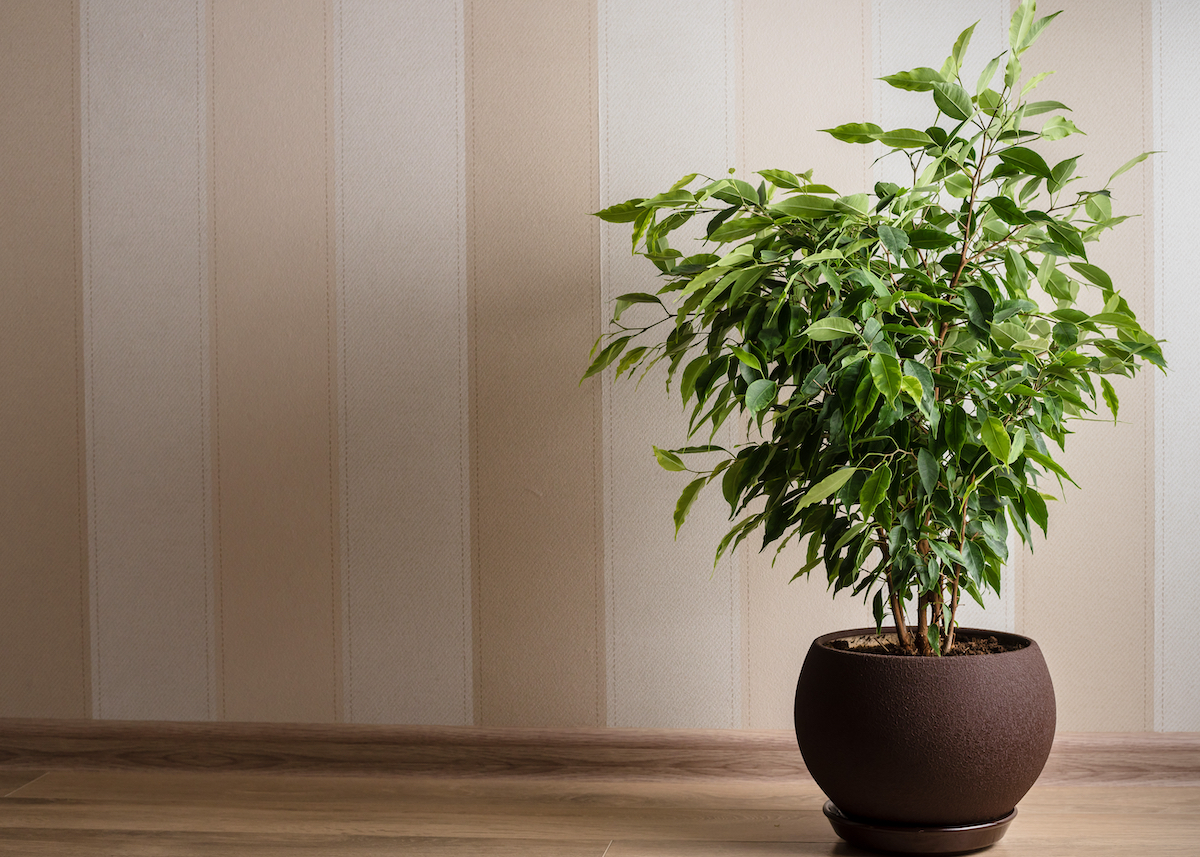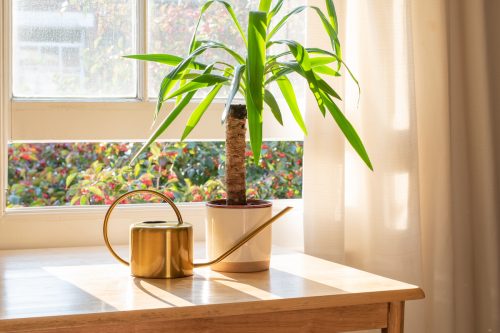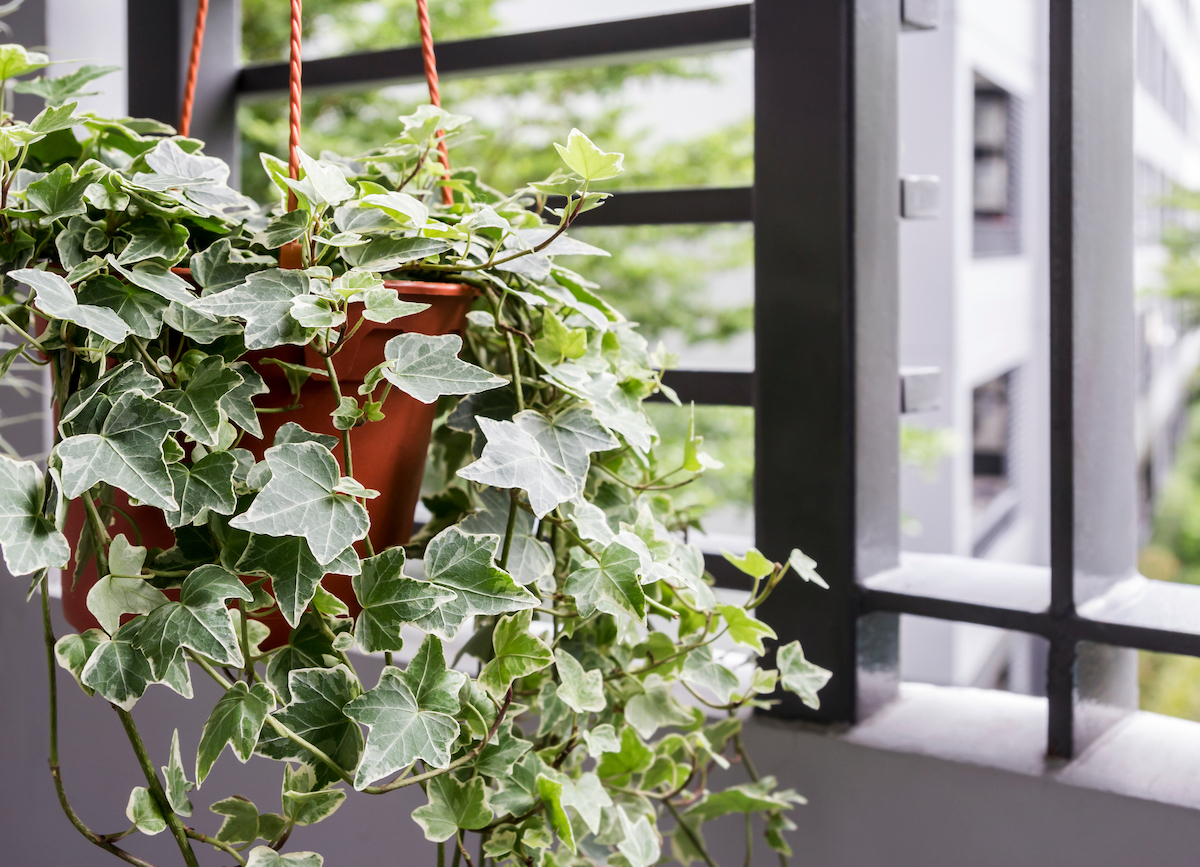The 4 Worst Houseplants If You Have Allergies
Are these popular plants triggering your symptoms?
Spring is almost here, and that means every time you step outside, you may soon find yourself contending with pollen, mold, and more. But if you experience allergy symptoms—runny nose, itchy eyes, congestion, or cough, to name a few—there's also a chance that the threat is coming from inside your very own house in the form of houseplants. According to the allergy medication company Flonase, four houseplants, in particular, are known to "make it more challenging to breathe if you have certain allergies to pollen or mold." Read on to learn which plants you may want to remove.
RELATED: 9 Houseplants That Will Help You Breathe Better.
1
Ferns

Ferns are beloved for their lush green leaves and low-maintenance needs, but some people with allergies or asthma may find their symptoms worsened in their presence.
"Ferns are commonly chosen as an indoor houseplant because they aren't toxic, making them a good option for people with children and pets," explain the experts from Flonase. "However, people with allergies may have a bad reaction to ferns. Breathing in fern spores can aggravate allergies."
Carlie Gasia, a certified wellness coach, warns that ferns are also "prone to developing mold in their soil which can also trigger allergies." She tells Best Life, "Breathing in mold spores can cause typical allergy symptoms such as sneezing and itchiness."
2
Weeping Fig

Next, the Flonase allergy experts warn that weeping figs may also trigger unpleasant symptoms. "Also known as ficus benjamina, the weeping fig is a relatively common indoor allergen," they write.
To this point, a past study confirmed that weeping figs can "cause allergic rhinitis and asthma."
Ficus plants can also release tiny particles of latex, a chemical compound similar to but separate from its sap. "These particles can be irritating to the eyes and skin and can cause sneezing," Gasia says.
RELATED: 7 Plants and Trees in Your Yard That Are Making You Sneeze.
3
Yucca

A 2014 study in the journal Allergy and Asthma Proceedings looked at a range of ornamental plants to determine which caused the most notable allergic or asthmatic reactions. They enrolled 150 patients with asthma and/or allergic rhinitis, and 20 healthy controls, then performed skin-prick tests to determine each subject's level of sensitization toward various species.
They found that the skin test positivity rate for ornamental plants was especially high in patients with a known history of allergic rhinitis, food sensitivity, and indoor plant exposure. Yucca plants triggered the most reactions, affecting over half of the study subjects.
"Although this plant is attractive indoors, it's best to avoid if you have allergies," agree the Flonase experts.
4
Ivy

Ivy is another houseplant that can trigger symptoms if you have a sensitivity. In particular, you may experience contact dermatitis from touching the plant, experts say.
"Sensitivity to English ivy is commoner than one supposes," says a study in JAMA Dermatology. "This common ornamental plant can cause dermatitis, not only from its leaves and stems but also from its roots. It is important to emphasize that the dermatitis clinically may resemble that from poison ivy."
It's also worth noting that there is no botanical relationship between English ivy and poison ivy, but both can trigger an allergic reaction. "While English ivy is not as dangerous as the similarly named poison ivy, it can still cause mild allergies and irritation," the Flonase team writes.





















